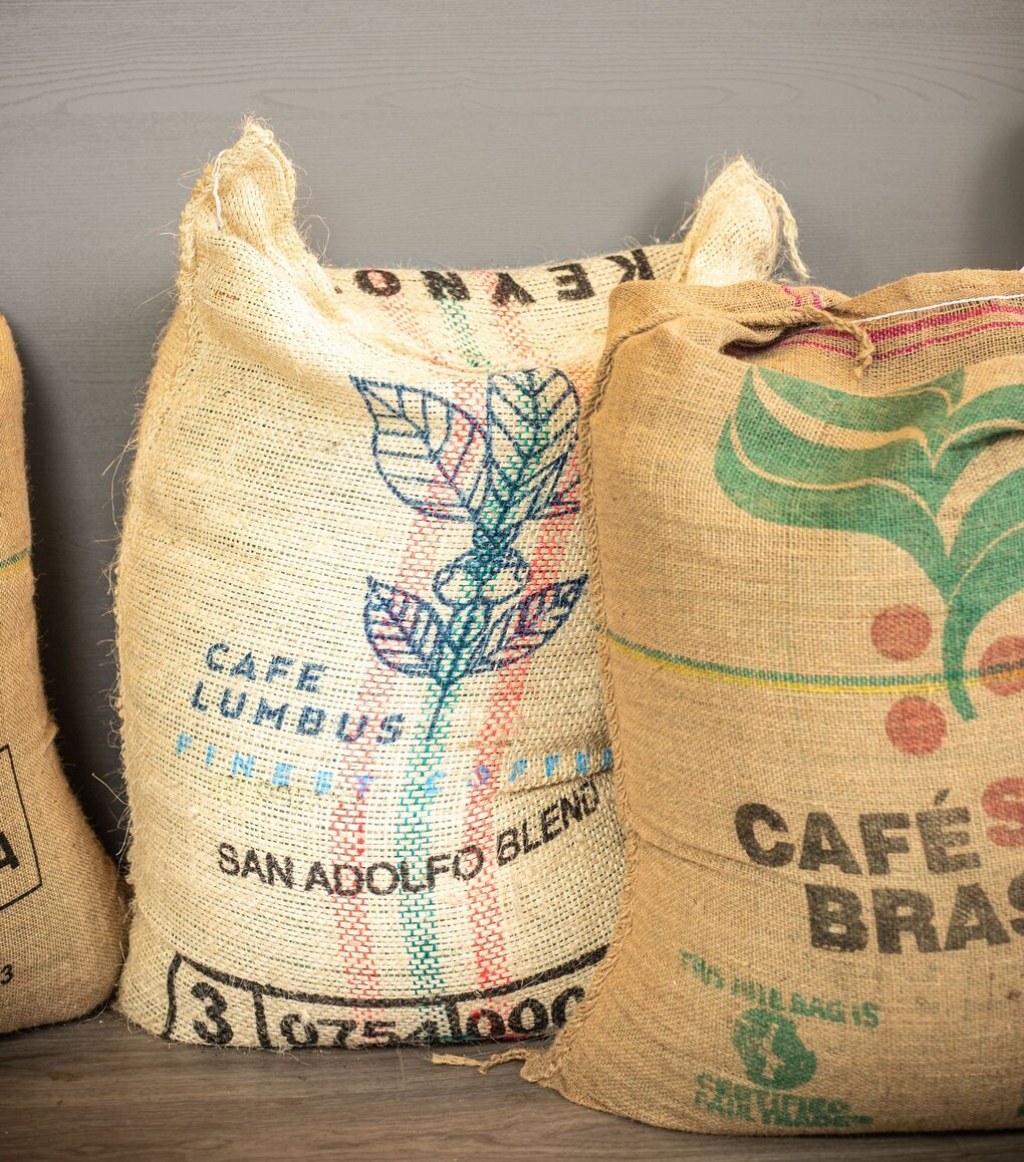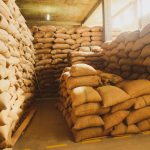Unlock The Benefits Of Green Coffee Sourcing Today: A Click To Action Guide
Green Coffee Sourcing: A Comprehensive Guide
Introduction
Dear Coffee Enthusiast,
3 Picture Gallery: Unlock The Benefits Of Green Coffee Sourcing Today: A Click To Action Guide
Welcome to our comprehensive guide on green coffee sourcing. In this article, we will delve into the fascinating world of sourcing green coffee beans and explore the intricacies involved in the process. Whether you are a coffee lover or a coffee professional, understanding the sourcing of green coffee is crucial to appreciating the flavors and quality of your daily cup of joe. So, grab your favorite brew and join us on this enlightening journey.
What is Green Coffee Sourcing? 🌱

Image Source: nestle.com
Green coffee sourcing refers to the process of procuring raw, unroasted coffee beans from coffee-producing regions across the globe. These beans are obtained directly from coffee farmers or through specialized importers and play a vital role in determining the quality, flavor, and sustainability of the final roasted coffee. The journey from the coffee farm to your cup involves various stages, each with its own unique challenges and considerations.
The Importance of Green Coffee Sourcing
☕ Green coffee sourcing directly impacts the flavor profile of the final cup of coffee. Factors such as the altitude, climate, soil conditions, and cultivation practices in the coffee-growing regions all contribute to the distinct characteristics of the beans.

Image Source: coolhandcoffeeroasters.ie
☕ Sourcing green coffee involves building long-term relationships with farmers, supporting their livelihoods, and ensuring fair prices. Sustainable sourcing practices promote environmental conservation and help uplift the communities involved in coffee production.
☕ By understanding the intricacies of green coffee sourcing, coffee professionals can make informed decisions about the beans they choose, resulting in a diverse range of flavors and experiences for coffee lovers worldwide.

Image Source: helenacoffee.vn
☕ Sourcing green coffee beans ethically and responsibly is crucial for maintaining the overall sustainability and long-term viability of the coffee industry.
Now, let’s explore the who, when, where, why, and how of green coffee sourcing!
Who is Involved in Green Coffee Sourcing? 🌍
In the world of green coffee sourcing, multiple stakeholders play essential roles:
1. Coffee Farmers: These dedicated individuals cultivate and harvest the coffee plants, carefully nurturing the cherries that hold the precious coffee beans.
2. Coffee Importers: Importers are responsible for bridging the gap between coffee-producing regions and the rest of the world. They facilitate the trade of green coffee beans and ensure quality control.
3. Specialty Coffee Roasters: These passionate professionals source green coffee beans to create unique roasts and flavor profiles that cater to the preferences of coffee lovers.
4. Certifying Agencies: Certifiers provide assurance that the coffee beans are sourced sustainably and ethically, adhering to specific standards such as Fair Trade or Rainforest Alliance certification.
Now that we know the key players, let’s explore the timeline of green coffee sourcing.
When Does Green Coffee Sourcing Take Place? ⏰
Green coffee sourcing is a year-round endeavor, influenced by both the coffee harvest seasons and the trade cycles. The timing varies across coffee-producing regions due to their different climates and agricultural practices.
1. Harvest Seasons: Coffee cherries ripen and are harvested at different times throughout the year, depending on the country and region. For example, in Central America, the harvest typically takes place between November and February, while in East Africa, it occurs between April and August.
2. Trade Cycles: Once harvested, the cherries are processed, dried, and sorted before being exported. The trade cycles involve contracts, negotiations, and logistics to ensure the safe transport of green coffee beans from the coffee-producing countries to their final destinations.
Now that we have a sense of the timing, let’s explore the geographical aspects of green coffee sourcing.
Where Are Green Coffee Beans Sourced? 🌍
Green coffee beans are sourced from regions known as coffee origins, which span across the globe, including:
1. South America: Brazil, Colombia, Peru, and Costa Rica are renowned for their coffee production, offering a wide range of flavor profiles.
2. Central America: Countries like Guatemala, Honduras, and Nicaragua produce specialty coffees with unique characteristics.
3. Africa: Ethiopia, Kenya, and Tanzania are known for their distinct, vibrant, and complex coffees.
4. Asia-Pacific: Indonesia, Vietnam, and India play a significant role in the global coffee market, with diverse coffee offerings.
5. Other Regions: Coffee is also grown in countries like Haiti, Jamaica, and Papua New Guinea, contributing to the global coffee supply.
Now that we know where green coffee beans come from, let’s explore the reasons behind sourcing these beans.
Why Source Green Coffee Beans? 🤔
Green coffee sourcing offers several compelling reasons for coffee professionals:
1. Flavor Diversity: Different coffee origins and varieties possess unique flavor profiles, allowing coffee enthusiasts to explore a vast range of tastes and aromas.
2. Quality Control: By sourcing green coffee beans directly, coffee professionals can ensure the quality and freshness of the beans they use for roasting.
3. Sustainability: Ethical sourcing practices promote social, economic, and environmental sustainability within the coffee industry, supporting farmers and protecting ecosystems.
4. Traceability: Sourcing green coffee beans offers the opportunity to trace the coffee’s origin, providing transparency and fostering relationships between consumers and coffee producers.
Now that we understand the why, let’s uncover the how of green coffee sourcing.
How is Green Coffee Sourced? 🌱
The process of sourcing green coffee beans involves several steps:
1. Research and Identification: Coffee professionals explore various coffee origins, cupping samples, and establishing relationships with importers or farmers to determine the desired flavor profiles.
2. Direct Trade vs. Importers: Coffee professionals choose between sourcing directly from farmers or working with specialized importers. Each approach has its advantages and considerations.
3. Cupping and Evaluation: Cupping involves assessing the sensory attributes of the green coffee beans to ensure they meet the desired flavor and quality standards.
4. Contracts and Logistics: Once the beans are selected, contracts are established, and logistics are coordinated to transport the green coffee beans from the source country to the destination.
Now that we’ve covered the what, who, when, where, why, and how of green coffee sourcing, let’s explore the advantages and disadvantages of this practice.
Advantages and Disadvantages of Green Coffee Sourcing
Advantages (Pros)
1. Flavor Exploration: Green coffee sourcing allows for an extensive range of flavors and profiles, providing coffee enthusiasts with diverse taste experiences.
2. Direct Relationship with Farmers: Sourcing directly from farmers fosters meaningful connections, fair trade practices, and sustainable partnerships.
3. Quality Assurance: Coffee professionals can ensure the quality, freshness, and consistency of the beans they source, resulting in a superior final cup of coffee.
4. Sustainability and Social Responsibility: Ethical sourcing practices support coffee farmers’ livelihoods, environmental conservation, and the overall sustainability of the coffee industry.
5. Transparency and Traceability: Sourcing green coffee beans allows consumers to trace the journey of their coffee, promoting transparency and accountability.
Disadvantages (Cons)
1. Limited Availability: Sourcing green coffee beans from specific origins may pose challenges due to limited availability, seasonal variations, or market factors.
2. Higher Costs: Direct sourcing can involve higher costs, including transportation, importation, and additional logistical considerations.
3. Quality Control Risks: Working directly with farmers may present challenges in maintaining consistent quality across different batches or harvest seasons.
4. Complexity and Expertise: Green coffee sourcing requires specialized knowledge, cupping skills, and a deep understanding of the coffee industry.
5. Market Volatility: Factors such as climate change, geopolitical events, and market fluctuations can impact the availability and pricing of green coffee beans.
Frequently Asked Questions (FAQ)
1. Can I source green coffee beans directly from coffee farmers?
Yes, sourcing green coffee beans directly from farmers is possible, but it requires establishing relationships and navigating logistical challenges.
2. What certifications should I look for in ethically sourced green coffee beans?
Certifications such as Fair Trade, Rainforest Alliance, or Organic can provide assurance of ethical and sustainable sourcing practices.
3. How do I ensure the quality of the green coffee beans I source?
Cupping and sensory evaluation are essential for assessing the quality and flavor profile of green coffee beans before committing to a purchase.
4. Is direct trade more sustainable than working with coffee importers?
Direct trade promotes stronger relationships with farmers, allowing for fairer prices and support for sustainable agricultural practices.
5. Are green coffee beans suitable for home roasting?
Yes, green coffee beans can be home-roasted, providing coffee enthusiasts with the ability to experiment and create their own unique roasts.
Conclusion: Taking Action for a Flavorful Future ☕
Now that you have gained insights into the world of green coffee sourcing, it’s time to take action. As a coffee enthusiast, support transparency, traceability, and sustainability by seeking out green coffee beans that align with your values. Explore the vast array of flavors and experiences available and indulge in the journey from bean to cup. By making conscious choices, you contribute to the livelihoods of coffee farmers and the continued growth of the coffee industry.
Final Remarks: Coffee and the World We Share
Coffee occupies a unique place in our lives, connecting people, cultures, and continents. As you embark on your coffee journey, remember the collective efforts required to bring that cup of aromatic delight to your hands. Green coffee sourcing is an intricate process that demands collaboration, education, and conscious decision-making. Let’s cherish every sip, celebrate the stories behind each bean, and ensure a sustainable future for coffee lovers worldwide.
This post topic: Green Coffee



